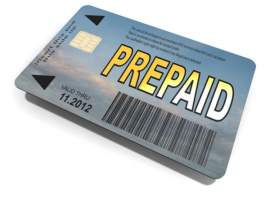
5 Facts You Must Know About Credit Cards for Bad Credit

Credit Cards
for Bad Credit Explained
Credit Cards for Bad Credit are financial
instruments that allow individuals in possession of credit history illustrating
a higher financial risk with regard to the approval of loans or the issuance of
credit cards. Although individuals in possession of credit scores determined to
be ‘bad’ will not be universally unable to become approved for credit cards,
they may endure more difficult experiences doing so.
However, the
receipt of Credit Cards for Bad Credit may be both possible and beneficial. Not
only will an individual be able to receive a credit card in lieu of credit
history determined to be ‘bad’, but prompt repayment of Credit Cards for Bad
Credit will typically result in the improvement of individual credit scores and
history.
Consideration for the Approval of Credit Cards for
Bad Credit
The following questions regarding Credit Cards for
Bad Credit may assist in the individual understanding of the components of
consideration undertaken subsequent to the approval of Credit Cards for Bad Credit
issued by credit institutions:
What is a ‘Bad’ Credit Score?
Credit scores classified as ‘bad’ will typically
range between the 600 and 620 marks with regard to varying analysis undertaken
and by the Fair, Isaacs, & Co. (FICO) credit ratings score. Although this
process of determination is not Federally-mandated, it is widely accepted by a
multitude of financial institutions and lenders.
What is Credit Card Debt?
Credit Card Debt are classified as debts that are
incurred as a result of credit card usage absent sufficient repayment. A credit
card allows an individual user access to funds in the form of interest-based
loans. In the event that an individual is unable to satisfy repayment, they
will typically endure a decline in their respective credit score.
The Terms of Credit Cards for Bad Credit
Due to the magnitude of the assumed risk inherent
in credit scores considered to be ‘bad’ on the part of credit institutions, the
initial terms of Credit Cards for Bad Credit may not be the most attractive. However,
strict adherence to the terms of Credit Cards for Bad Credit – including prompt
repayment and responsible usage – will typically allow for the growth of credit
scores.
The
following terms are amongst the most common with regard to Credit Cards for Bad
Credit:
Credit Cards for Bad Credit Annual Percentage Rate
(APR)
The Annual Percentage Rate is a form of credit
card interest defined as an expressed and established percentage of the gross
value of Credit Cards for Bad Credit. APR is considered to be a compensatory
method undertaken by the credit institution as a result of furnishing an
individual with a credit card.
The APR is
added to the full amount of repayment that is required for the satisfaction of
Credit Cards for Bad Credit balance. The APR designated to Credit Cards for Bad
Credit is typically higher than the median APR designated for credit cards
issued to those with higher credit scores.
Limits of Credit Cards for Bad Credit
Credit limits implicit within Credit Cards for Bad
Credit are defined as finite, monetary amounts of credit that may be undertaken
by individuals in possession of Credit Cards for Bad Credit. While credit
limits inherent within Credit Cards for Bad Credit may be significantly lower
than limits allowed to individuals in possession of higher credit scores,
prompt repayment and responsible usage will typically result in increased
credit limits.
Credit Cards for Bad Credit Assistance
Individuals interested in applying for Credit
Cards for Bad Credit are encouraged to contact legal and financial
professionals in order to better understand both the risks and ramifications
latent within Credit Cards for Bad Credit.
NEXT: A Comprehensive Guide for Understanding Secured Credit Cards




















